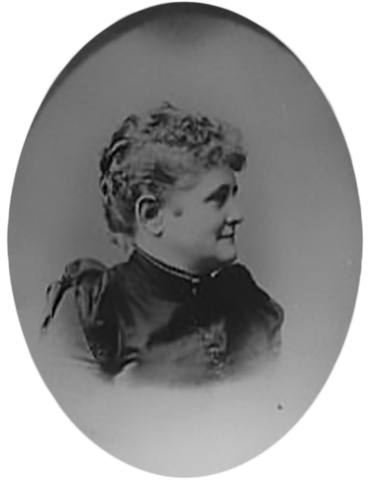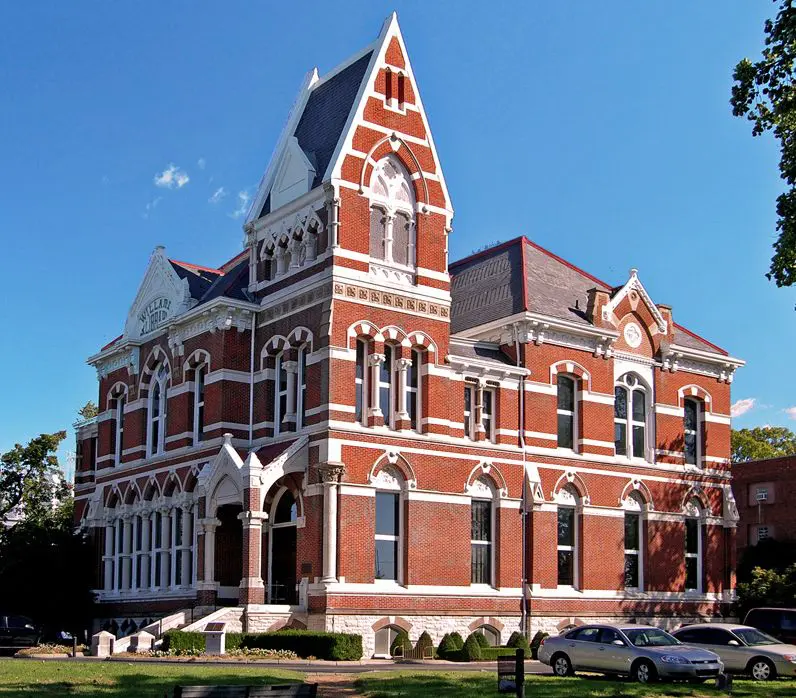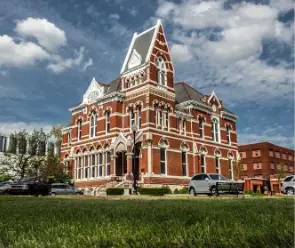About Us
Mission Statement
It is the mission of Willard Library of Evansville, Indiana to provide access to historical, recreational, educational, and cultural materials and services free of charge to all community residents regardless of age, race, class or gender.
About Us
faq
Founder Willard Carpenter wanted to leave a lasting legacy in Evansville, a town he had helped to build through politics and business. His dream was to build a Willard College. Although the project was actually begun—plans were drawn up, trustees were appointed, and resources were allocated by Carpenter—the resources available were not great enough to fund a sustainable institution of higher learning.
A considerable fortune that Carpenter had amassed in his earlier years in Evansville had been lost through some unfortunate railroad and other dealings. Although Carpenter had worked to rebuild his wealth, he did not have enough years remaining to replace the money he had spent his most productive years pursuing through real estate and other business deals. And the real estate he held had been considerably devalued by the economic conditions of the day.
And so, faced with that reality, and with many who agreed that the college would struggle at best, Carpenter was encouraged by his peers to direct his intentions to the founding of another institution, perhaps a library.
Carpenter seemed to like the idea, seeing a connection between the two—both were dedicated to learning and would benefit the community. And so, his long-held dream of creating a Willard College was re-directed into the creation of Willard Library.
Following receipt of the August 23, 1876, letter to the Library trustees from Willard Carpenter, the trustees sent a letter of their own, accepting their new roles.
On August 23, 1876, Willard and Lucina Carpenter—although she reportedly opposed the idea—executed a deed of trust, conveying the promised property to the Library Trustees.
In the spring of 1877, at age 74, Willard Carpenter, hoping to speedily complete the library project, made two trips to Chicago to consult with architects. Robert Boyd and Henry Brickley were chosen to be the architects for the job, and groundbreaking was scheduled for May 17.
By August 13, the stone foundation had been completed to the top of the water table, and by September 2, 1877, the stonework was finished. But at that point, the foundations were sealed to be made weathertight. The real estate market was very weak, and the trustees had decided to wait to continue construction until their land holdings—the source of project funding—could command higher selling prices.
Quelling rumors that the project had been abandoned, work on the Library resumed in 1882. Carpenter wanted to see the Library built in his lifetime, and although the land values had not rebounded as hoped, he was ready to “hurry matters up.”
The former architects were no longer in business in Evansville, but their successors, James and Merritt Reid, took over the project.
With construction in full swing in 1883, Willard Carpenter, now 80 years old, was on the job site every day, inspecting the work of the paid laborers—and working. Not everyone was thrilled with that arrangement. His family was said to be embarrassed that he was hauling around wheelbarrows and climbing up on the roof; and one has to wonder how excited the workers were to have his watchful eye on them daily.
His work came to an end, however, in late October 1883, when Carpenter suffered a paralyzing stroke. On November 3, he died.
The town’s primary newspapers, the Courier and the Journal, both ran extensive obituaries of Carpenter and lengthy editorials. Both papers reviewed his life and career and praised his good works.
While neither paper spoke ill of the dead, they both reported that others had spoken ill of him. The Courier read, “No man in Evansville, living or dead, has had as many unpleasant things said of him…,” and the Journal reported, “Mr. Carpenter was not without his enemies.”
In his business dealings, Carpenter’s ethics were often quietly questioned. And he had been involved in so many deal-related lawsuits, that working to untangle them had been a way of life for him.
Some of his detractors, sadly, were within his own household, as would be detailed in testimony during a later legal proceeding involving the Library. While generous with the community, Carpenter was not reportedly generous with his own family. This driven businessman apparently had little constructive involvement with his three children, Louise, Marcia, and Albert. Later in his life, he determined they would receive very little inheritance from him. (In fact, he allegedly told daughter Louise and her husband that they would receive nothing.) Instead, he had determined to give his money to public charity. His wife had insisted that he give property to her before she would sign with him to deed the rest of it to the Library trustees.
This grand ornament Carpenter had built for the city—the Library—must have been a bitter reminder to those closest in his family tree that he loved the city and his own name more than he loved them. He had been one of the architects of Evansville, through his political and business dealings. And he had seen to it that he would be remembered—by designing, funding, and helping to build a monument to himself.
None of this, of course, would have been mentioned in the obituary of a community leader of such standing.
By 1884, Willard Library, at a construction cost of $60,000, was nearly ready to open. It was time to stock the shelves with books.
The purchase of new volumes for the Library was personally overseen by Samuel Bayard, who traveled to Cincinnati for that purpose. Alongside the newly purchased volumes, most of the first 10,000 books to grace the shelves were hand-me-downs from the Evansville Library Association and the Public Library of Evansville.
The first librarians at Willard Library, Otilda Goslee and Lou Scantlin, had been employees at the Public Library of Evansville.
Opening ceremonies were scheduled for March 28, 1885, and a public invitation ran in the morning Courier that day:
“A cordial invitation to the public is extended, and as the library is for the masses, rich and poor alike, the capacity of the house ought to be fully tested…. The members of the board desire it to be distinctly understood that all citizens are cordially invited to attend the opening ceremonies and that they will be heartily welcomed.”
The Courier article also contained a detailed description of the interior of the Library—since most onlookers would have been familiar with the exterior that had been under construction in plain view for some time. The article contained a characterization of the books, as well.
“On entering from the wide stone stairway into the vestibule the unique patterned tile flooring attracts the eye at once. To the left is the spacious library room, which, with its handsome tile flooring, heavy oak finished woodwork and corniced ceiling, does full justice to the outer appearance of the building. Behind a railing reaching across the room are ranged the book shelves substantially filled with mental food of so varied an order and supply to meet the wants of ‘all sorts and conditions of men.’
“The books represent a judicious and careful selection, and it is observable from the well-worn and used condition of those of a solid nature that the study of the sciences, philosophy, history and the arts here is extensive. Of light fiction the number of books is very meagre, and this fact has caused not a little complaint, but it has been the means of elevating the taste of not a few to a liking for standard novels, with which the library is well stocked, and even to heavier reading.
“The office room on this floor is furnished in the same excellent manner as its surroundings. From the vestibule the broad heavy balustrade staircase leads to a large room above corresponding with the library room below. It is proposed to make this the reading room. Instead of plate glass, as in the library room, the windows here are ornamented stained glass. In one corner is a room corresponding with the office down stairs, and which has been engaged by the Ladies’ Literary club, which has furnished it with exquisite taste.”
On opening day, the Library had been decorated to receive its public for the first time. An orchestra was prepared to play. Addresses were scheduled to be delivered by prominent citizens and members of the board of trustees. And the weather was dreadful.
Although the crowd size was no doubt diminished by the elements, the opening went on, as scheduled, on March 28, 1885.
Just two days later, on March 30, patrons began checking out books. In a two-day period, 98 people registered as patrons. In that day, to be issued a library card, one needed a co-signer who would vouch for the character of the cardholder.
Source: “Where There’s a Willard: The First 100 Years of the Willard Library of Evansville, Indiana.” Copyright 1986, Friends of Willard Library, Inc.
A Timeline of Willard Library
Take a fascinating stroll through the history of an Evansville, Indiana, icon; learn about the people and events that have shaped Willard Library.
A letter was sent to the Library trustees from Willard Carpenter, outlining his plans and wishes for "THE WILLARD LIBRARY."
The property on which the Library and Park would sit, as well as the property that would endow the project, was deeded to the Library trustees by Willard and Lucina Carpenter.
Groundbreaking was held for the Library.
The stone foundation of the Library was completed to top of the water table.
The stonework was finished, and a construction hiatus began.
Wishing to see the Library completed in his lifetime and impatient with waiting for land values to increase, Willard Carpenter urges that the work resume. It did.
An Architectural Note
Terra cotta was used extensively for exterior decorations on the Victorian Gothic building, including the owls that represent wisdom.
Willard Carpenter died several days after suffering a paralyzing stroke, and before seeing the completion of the Library.
Opening ceremonies of Willard Library are conducted, despite horrendous weather conditions.
Suit was brought against Willard Library by Willard Carpenter's daughter Louise, to recover property held by the Library. In the suit, the would-be heiress, having been snubbed by her father, claimed that he had been of unsound mind and had been unduly influenced in establishing the Library. The court found in favor of the Library.
Martha Orr Bayard bequeathed to Willard Library the books in her husband's library, to be used as reference books, along with funds to purchase cases for the books. These are housed in the second-floor Bayard Room, in memory of Samuel and "Mattie" Orr Bayard.
Edmund L. Craig, president of the public library board of Evansville, proposed that all libraries in the city be brought under common supervision. The Willard Board responded that they could not consider the proposal, since the terms of the Carpenter Trust forbade the corporation from operating buildings other than on Willard Park.
Well-loved Head Librarian Otilda Goslee died at age 76. Perhaps her greatest contribution to the Library was to firmly establish the tradition of warm, friendly service for which Willard Library had become known, and is still known today.
A night janitor at the Library reported seeing an 'all-grey' lady, with grey shoes and grey veil, as he entered the basement during his 3 a.m. visit to stoke the coal furnace. He was so startled that he dropped his flashlight. He reported that the image then dissolved into shadows. The night janitor quit his job shortly thereafter.
The Library held its first children's story hour, with Margaret Maier as storyteller.
Willard Library's first Easter Egg Tree, inspired by the Katherine Milhous book Egg Tree, was created by children's librarian Margaret Maier. The Willard Library Easter Egg Tree became an annual tradition, later featuring eggs decorated as literary characters.
Willard Library was placed on the National Register of Historic Places.
Friends of Willard Library was formed, in order to "promote awareness and use of Willard Library by providing volunteer service, by increasing financial support, and by sponsoring cultural programs for the community."
A library consultant visited Willard Library to provide recommendations to help the board with long-range planning. As a result, the board determined to establish an archives and research center, building on the strength of the Library's special collections. It would be named the Regional and Family History Center, and would be housed on the second floor.
The Tri-State Genealogical Society was officially begun. By 1983, the society had more than 500 members. To this day, the Society continues as an effective partner with the Library in promoting the study of family history in the Evansville area.
The Library hosted a reception to mark the publication of Where There's a Willard, a history of Willard Library.
The Library announced construction of a climate-controlled room in the basement for storing rare documents, such as letters and photos.
Margaret Maier died. Known as "Miss Margaret" during her 50-year tenure as children's librarian, Maier was well-known for her annual Easter Egg Tree. She had helped several child patrons who later achieved national fame, including Bob Griese, Ron Glass, Tom Armstrong, and Andy Benes.
Adult Services Librarian Greg Hager was promoted to Director of Willard Library.
Installation of the Library's local area networked computer system was completed.
Television personality Willard Scott acknowledged Willard Library's one hundred-tenth anniversary on the NBC network's Today Show.
Willard Library opened the Adele and Paul Torian Native American Leaders of the Mid-19th Century permanent exhibit. The three volumes of the folio-sized History of the Indian Tribes of North America by Thomas L. McKenney, published in 1838, 1842, and 1844, were a gift from Adele and Paul Torian.
The Captain Henry Vanderburgh Chapter of the National Society Daughters of the American Revolution dedicates an historical marker in honor of library founder, Willard Carpenter. The marker, featuring an open bronze book on an unfinished gray granite pedestal, is located in the front flower bed to the right of Willard Library's front entrance.
Willard Library celebrates its 125th Anniversary by hosting an Open House. 600 Willard Library children and adult patrons attend throughout the day to celebrate Willard's past, present and future.
Dedication of the north side of Willard Park. Enhanced through a generous $100,000 donation from neighbor Berry Plastics, the park re-design features perennial flower beds, new trees, berms, donated benches, and paved pathways designed by landscape architect, Rundell Ernstberger.
Library Director, Greg Hager presents a proposal to the Evansville Convention & Visitors Bureau for a 2.4 million dollar, 8,000 square foot below ground expansion of Willard Library for the purpose of housing the library archives and containing a gallery capable of seating 150 people. Willard Library, having already raised 1.5 million dollars, announces that this would be the first ever physical expansion of Willard Library.
The first expansion in Willard Library’s history was opened to the public, attendees came internationally to attend the grand opening.
About Us
the grey lady ghost
- The Grey Lady was last reportedly sighted on August 10, 2010 in the basement hallway by the Assistant Children’s Librarian.
- Psychics visiting the library in 2007 say they were able to verify that a ghost has been there, and paranormal investigative groups have brought in equipment designed to locate it.
- Several library employees have reported seeing the ghost, including Margaret Maier, Children’s Librarian, and Helen Kamm, Library Assistant.
- During a visit to the library, lecturers from the University of Southern Indiana say they saw the ghost peering into water.
- Policemen responding to a security alarm at the library spotted two ghosts in an upstairs window of the library.
- A library patron reported an encounter with the Grey Lady in the library elevator, and a local weathercaster also reported an encounter with the spirit.
- Hundreds of people look for the Grey Lady every October, during Ghost Tours sponsored by the library. Eight—hundred curious individuals attended the first such tour in the late 1990s, which have been a popular annual event ever since. Check the calendar of library events for upcoming tours.
Unexplained Occurrences
- Water turned on or off
- Smell of perfume
- Feeling of cold
- Noises
- Books and furniture found moved
- Feeling of touch on hair and earrings
- Odd items found in library

Grey Lady Ghost Cam
Shop Grey Lady
Download Grey Lady Packet
Hours of Operation
visit us
| Monday | 9am - 8pm |
| Tuesday | 9am - 8pm |
| Wednesday | 9am - 5:30pm |
| Thursday | 9am - 5:30pm |
| Friday | 9am - 5:30pm |
| Saturday | 9am - 5:00pm |
| Sunday | 1pm - 5:00pm |

About Us
employment
Willard Library is an equal opportunity employer. We welcome qualified applicants for the following full-time, part-time, and internship positions.

Willard Library is a public library famous for personal service and treasured special collections. The library opened its doors in 1885 and is the oldest library building in the state of Indiana. Located at the corner of Lloyd Expressway and First Avenue, you cannot miss our gracious Gothic-style building in the middle of a 3.5-acre park.
About Us
join the friends of willard library
The Friends of Willard Library was organized in 1972, “to promote awareness and use of Willard Library by providing volunteer service, by increasing financial support, and by sponsoring cultural programs for the community.”
Your membership helps purchase special equipment and furnishings, continues restoration of the building and grounds, increases the library’s collections, and better connects you to library programs and events.




